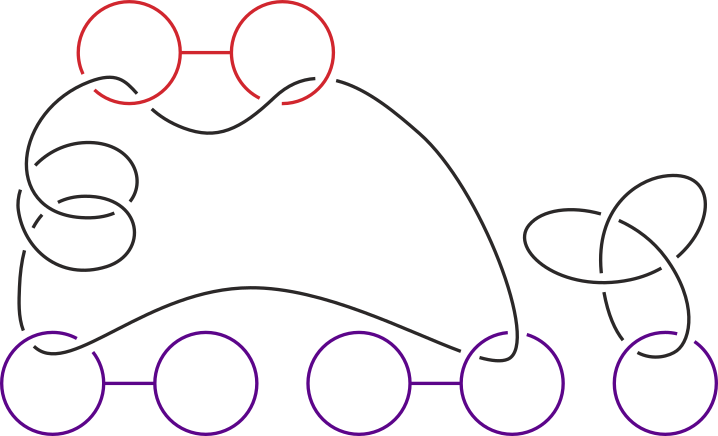Tour of knots & theta functions
Date:
Seminar presented as part of the Postgraduate (PG) Seminar series of Stellenbosch University’s mathematics department.

Overview
This talk closely follows the material covered in Theta Functions and Knots by Răzvan Gelca. The main goal is to build up to the punchline of chapter 5 from that book1 - namely, the isomorphism between the space $\Theta^\Pi_N(\Sigma_g)$ of theta functions defined by a Riemann surface $\Sigma_g$, and the skein space $\mathcal{L}_N(H_g)$ of its enclosed handlebody $H_g$.
This is a remarkable result - reaching it takes us on a lightning tour through quantum mechanics, complex analysis, low-dimensional topology, and representation theory.
Why this matters
The isomorphism in question, aside from being interesting in its own right, is especially relevant to my current research - indeed, my research aims to improve a certain analogue of this very isomorphism.
To be precise, it turns out that the theory of theta functions as given in Gelca can be formulated as a specific instance of Chern-Simons theory2, namely ‘abelian’ Chern-Simons theory, where the gauge group is $\mathrm{U}(1)$ instead of the usual $\mathrm{SU}(2)$. My research topic deals with an isomorphism analogous to the one described above, but arising within the $\mathrm{SU}(2)$ version of the theory. We hope to “improve” this isomorphism by stating it in a basis-free manner, which has currently not been done. This is of interest because expanding with respect to the preferred basis is generally hard.
Related references
My quantum group seminar series connects to the material discussed here. Indeed, Gelca introduces quantum groups3 precisely in order to frame the theory of theta functions in terms of them. This description of theta functions is extremely efficient and elegant - well worth checking out!
Specifically, this result appears in Gelca as Theorem 5.7 in section 5.4.2. We have used the same notation as Gelca in stating it. ↩
Gelca describes how the construction above forms part of a TQFT in section 7.5, and discusses the connection with Chern-Simons theory in the epilogue (chapter 9). ↩
The quantum group discussion in Gelca (chapter 8) is very succinct, but good nevertheless - ultimately, Gelca made it into the reference list for my quantum groups talks also. ↩
